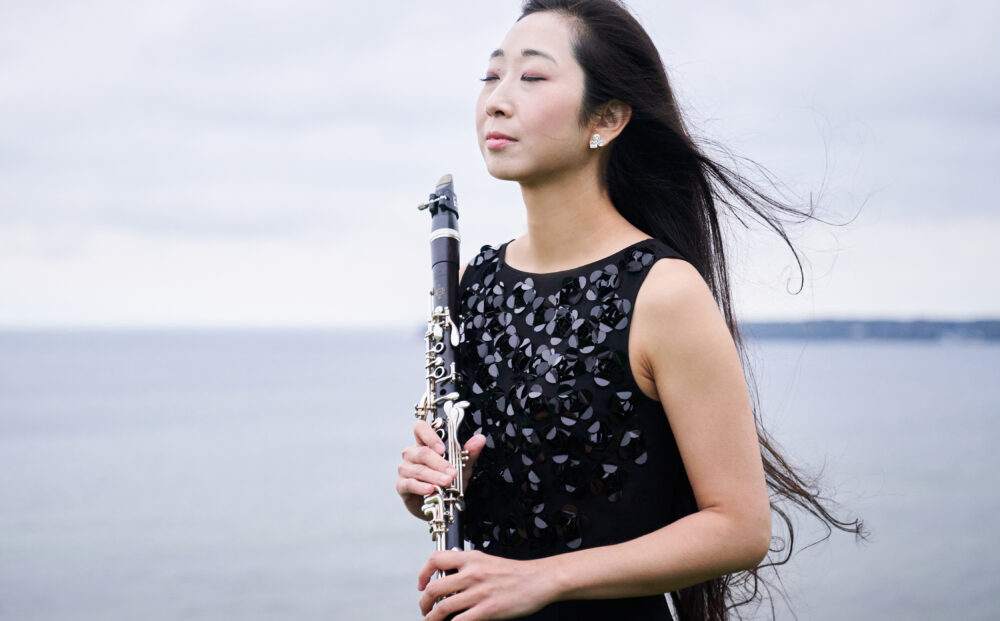
19:00 – 21:00
Soloists Soo-Young Lee (clarinet), Vambola Krigul (percussion).
Conductor Normunds Šne
Maria Rostovtseva – Calcium Cooke 1959 (2023, premiere)
Santa Ratniece – Aureole (2018)
Evelin Seppar – Kraft for clarinet and symphony orchestra (2023, premiere): I, II, III, IV
Tatjana Kozlova-Johannes – Dark Wings for percussion and symphony orchestra (2022, premiere)
Lepo Sumera – Symphony No. 6
I Andante furioso
II Andante
Maria Rostovtseva: “The musical material of the piece “Calcium Cooke 1959” (2023, premiere) is based on the verbal description of a relatively uncomfortable mental state. Among other things, Mr. Cooke helped express calcium deficiency with his 1959 writing.”
Aureole (2018), Santa Ratniece: “On cold winter days, when we look up at the moon, we can see a strange phenomenon – a circle of light surrounding the moon. This optical halo illusion is created when the moonlight is reflected by millions of icy crystals. The moment a beam of light breaks through an ice crystal, it refracts, or changes direction, along a 22-degree gradient. This is very rare, but on cold winter nights it can be seen in Latvia and sometimes even called a winter halo. Usually a circle of light surrounding the moon is white, but in very rare cases it can also be coloured, like a faint rainbow. In these cases, the light is scattered by ice crystals over time, when there are feather clouds in the sky. The piece visualises all the processes that make up the peculiar circle of light around the moon – the rays of light, the immense distance, and the microscopic millions of ice crystals.
The composition is entitled Aureole. It is the radiance of a circle of light in the paintings, which include the figures of various holy figures. This kind of a parallel will be drawn between the lunar circle of light or halo and the divine nimbus from the world of art. The “halo” is found in all religions in the artistic representations of Christianity, Buddhism and Islam.
The orchestral colour palette evokes the imagination on its way from a medieval painting to the distant, unreachable moon. Dedication to Latvia, in a sense that Latvia is also surrounded by a circle of light or a halo.”
Evelin Seppar: “The clarinet concerto Kraft (2023, premiere) was commissioned by Estonian Music Days and consists of four movements. The work takes its title and inspiration from Bach’s motet Komm, Jesu, komm. I’ve sung all of Bach’s motets myself, but it was a fragment of one motet that I heard in the spring of 2022 – Die Kraft verschwindt je mehr und mehr – which particularly struck me. I knew immediately that the title of my forthcoming clarinet concerto would be Kraft. Kraft means “power” or “force” in German. I’ve been thinking a lot about what these words could mean to me and what role they could play in an instrumental concert. The clarinet concerto was completed in the beginning of 2023. The influence of Bach can also be heard in the second and especially the third movement. Kraft was written for Soo-Young Lee, the concertmaster of the ENSO’s clarinet section, whose playing has greatly inspired me and who has been a great help in refining the musical material.”
Tatjana Kozlova-Johannes: “Dark Wings (2022, premiere) is inspired by Wendel Berry’s poem To Know the Dark.”
“To Know the Dark”
To go in the dark with a light is to know the light.
To know the dark, go dark. Go without sight,
and find that the dark, too, blooms and sings,
and is traveled by dark feet and dark wings.
Symphony No. 6 (2000) was premiered on May 5, 2000 in Tartu (and a day later in Tallinn) in connection with Sumera’s 50th anniversary, where ERSO was conducted by Arvo Volmer. A month later, Lepo Sumera died. As fate would have it, the work, which was one of the composer’s last compositions, begins with reminiscences of his earlier works, including the piano piece (or 1st symphony) motive (celestal), but there are also references to, for example, the 3rd and 4th symphonies – as if made as a summary – so that in an original way proceed further. This is an extremely painful opus, undeniably one of the star works of the Estonian symphony.
One of the highlights of the Estonian Music Days is the concert of the Estonian National Symphony Orchestra, this time conducted by Normunds Šne, one of Latvia’s leading conductors of contemporary music. New works have been written by Estonian women composers Tatjana Kozlova-Johannes, Maria Rostovtseva and Evelin Seppar; the clarinet concerto by Seppar will feature Estonian National Symphony Orchestra’s outstanding clarinettist Soo-Young Lee as soloist. Santa Ratniece’s exciting orchestral work from 2018 represents Latvian contemporary music and the programme also includes “Symphony No. 6”, one of the last works by Lepo Sumera.
In collaboration with Estonian National Symphony Orchestra. The concert will be live-broadcasted by Klassikaraadio.
